If you purchase an independently reviewed item through our site, we earn an affiliate commission. Read our affiliate disclosure.
Hey there, prospective beekeepers! You’re probably reading this article because you’re interested in getting started in beekeeping. The prospect of a person being able to keep his/her own bees and harvesting their own honey is a very interesting and rewarding activity.
Beekeeping has been practiced by humans for a very long time. In the past, logs were used as beehives. Today, more advanced equipment such as the Langstroth beehive is used. Beekeeping is also called apiculture. A beekeeper with many beehives close to each other in one place is said to have an apiary. Getting started in beekeeping can be daunting if you do not have the proper guidance and information. Once you get into the groove of things however, you will quickly start enjoying being a beekeeper, and BeeKeepClub is here to guide you right along the way.
Whether it’s just a hobby or you plan to go commercial, there are a number of things that you will have to consider before going ahead with the adventure. Below you will find a selection of questions that beginner beekeepers usually ask.
1. Does Beekeeping Take a lot of Time?
The practice of beekeeping is usually dependent on seasons and so will vary greatly according to the time of the year. If you take winter, for instance, a beekeeper usually does nothing except for checking on the bees and maybe clear beehive entrances blocked by snow. When the seasons change and its summer time, that’s when the beekeeper will be very busy. This is the time when every hive must be checked almost weekly to ensure that no swarming has taken place. It is the time when more honey supers are added to hives. These tasks can seem daunting at first as a beginner, however you can more experience, you’ll be able to complete them in a matter of minutes and go about your business.
2. Is Beekeeping Difficult?
Beekeeping does not involve strenuous work at all, even though there are instances when you will be required to move the hives from one point to the next. By joining your local beekeeping association, you will learn more about how you can limit the physical labor input that beekeeping may require from you.
3. What are the Costs Associated with Beekeeping?
Costs will of course vary from manufacturer to manufacturer. However, you can read this article to get a breakdown of the approximate costs involved in getting started in beekeeping.
4. Is Beekeeping Profitable?
Beekeeping is very profitable when you do it the right way. With proper beekeeping practices and a suitable beehive, you can enjoy a satisfying income with every harvest of beehive products. Beekeepers with a large number of beehives enjoy more profits from their beekeeping activities.
In addition to the monetary value of beekeeping, you get to contribute to keeping nature balanced. Hobbyist beekeepers get a lot of satisfaction from knowing they promote better pollination of plants. Honeybees in a single colony can cover very large areas with their pollination activity as they forage for pollen and nectar.
5. What is the Equipment that I need when Getting Started in Beekeeping?
The very first thing you need to have is of course the beehive because that’s where the bees will live. You can build your own hive at home (if you’re so technically inclined) or purchase an already-built hive. The other things you will need are the bee smoker, bee feeders, beekeeper suit, beekeeper hat, and veil. Some manufacturers are smart enough to package the essential supplies into a beekeeping starter kit which you can order online and have it shipped right to your door.
6. Which are the Best Types of Bees for Getting Started in Beekeeping?
There are usually a number of bee races that are kept for the purposes of honey production, cross-pollination, and other bee-related products. Even though there are several types of bee races, their differences are usually not that big. As long as these types of bees are well-reared and taken care of, a beekeeper’s objective to get maximum honey will be achieved.
Below are some bee species that a beginner beekeeper can choose from:
Italian Bees
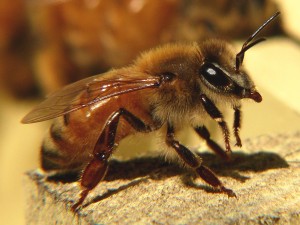
Italian bees are a type of bee race that is usually more commonly found in North America. Italian bees use less propolis than the darker types of bees. To identify the Italian bee, check out for bands on their abdomen in a brown or yellow color. The major weakness of the Italian bees is that they are usually more susceptible to robbing and drifting.
Cordovan Bees

Cordovan bees are a subset of the Italian bees but are distinguished based on their color. They are usually a little gentler than the Italian bee but in contrast, they tend to rob more. They are distinguished by their distinctive yellow color but they don’t have the color black. Unlike the Italian bees that have legs and heads that are black, the Cordovan bees have legs that are purplish and heads that are purplish too.
Starline Bees
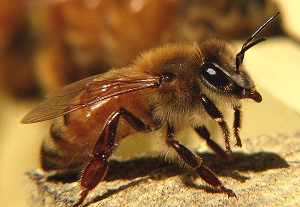
Starline bees are bred from various Italian bee strains. The Starlines are usually very productive and also very active, creating tremendous amounts of honey, however, the second generation queen is ineffective and you’ll need to requeen every year.
Caucasian Bees
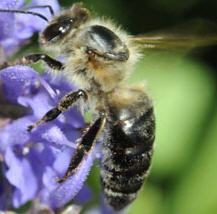
Caucasian bees are usually distinguished by a distinctive silver-gray to dark brown color. Compared to the Italian bees, they tend to be a little slower during the spring. They are generally even gentler than the Italian bees and are usually not as productive as the Italian bees but are less prone to robbing. They are known to do propolis a lot more than the Italian bees.
Russian Bees
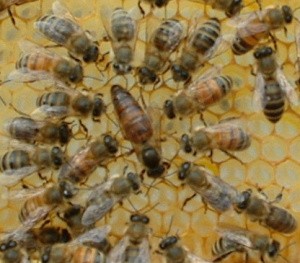
This race of bees originally came from the Primorsky area of Russia and is known to be very good at resisting mites. They are a lot more defensive compared to other bee races. They are also more productive but working with them can be a little cumbersome due to their defensive nature.
7. How Much Space Should I Have When Getting Started in Beekeeping?
Honeybees attract the question of how much space they need due to two factors. The first is that they fly away from the beehive to forage. Second, bees sting their enemies including people if they are determined to be a threat to the bees. In most cases, the minimum space you need to start beekeeping is the space your beehive will occupy. Additionally, consider that the walls of your house or perimeter fencing near the beehive can be an obstruction to bees. They can fly upwards and away at a rate of one foot upwards for every foot available horizontally.
Backyard or Urban – it’s up to you
Backyard beekeeping is possible, as well as rooftop beekeeping. Rural areas are great for beekeeping and beginner beekeepers should try them out before venturing into urban beekeeping (if possible). However, there are many successful beekeepers in urban areas, so do not be discouraged. There are many flowers in the suburbs and bees can still get enough food to make honey. Bees can move a distance of up to 2 miles from the beehive in general in their search for pollen, nectar, and other nutrition. In other areas, the distance doubles or even triples.
Keeping honeybees in the city and residential areas requires you to take some measures so that the bees do not appear problematic or become a nuisance to your neighbors. In some jurisdictions, you might need to be licensed by local authorities to keep bees. Check with your local authorities and link up with beekeepers near you to find out what is required before setting up your first beehive.
8. What Beehive Products Will I Get From Bees?
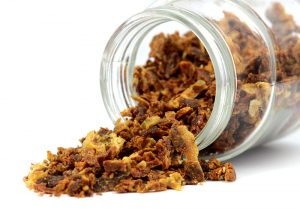
Once you have gotten started in beekeeping, you benefit in more than one way. Most people look at beekeeping as only getting honey from it. Of course, it is one of the major products you get from a beehive but is not the only one. The benefits and products you get from keeping honeybees include:
Honey
Honey is the most popular beehive product. It is sweet to the taste and can be eaten alone or used as a sweetener. It is also applicable to many recipes at home. Honey is added to many products in the beauty industry. It also has many medicinal uses that make it a frequent ingredient in remedies.
Beeswax
The wax that bees use to make comb is one of the harvested products in a beehive. Beekeepers can then sell the wax or use it at home. Traditionally, beeswax has been used to make candles. The candles made from beeswax last long and dripless. Beeswax has found many functions in households and the beauty industry where it is used to make lip gloss, lip balm, salves, moisturizers, and hand creams. It is also found in eyeliner, mustache wax, and in hair pomades that make hair look shiny and sleek. You may also use beeswax in your home recipes for beauty creams.
Propolis
Propolis is a sticky substance used by bees to seal cracks and seal up spaces. It is found in significant amounts in a beehive and is harvested as you harvest honey. Propolis found on beehive frames is removed to prevent bees from building honeycombs outside the assigned space in the frame. Propolis and its extracts are used for its antimicrobial and immune-modulatory properties.
Other Beehive Products
Other beehive products you may harvest include new queen bees to sell to other beekeepers. New queen bees are great for improving the gene pool of a honeybee colony. Royal jelly and bee pollen are also collected from beehives and used for their high nutritional value as well as medicinal properties.
Pollination Benefits
This is not necessarily a beehive product, but in their search for nectar and pollen, bees cross-pollinate plants of many species. Many plants depend on insect-aided cross-pollination to prevent self-fertilization or limit its occurrence. By keeping bees, you are sure to enjoy better pollination in your own gardens and for the plants around your area.
9. What is a Beekeeping Starter Kit?
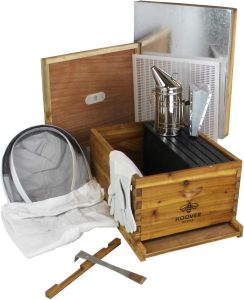
A beekeeping starter kit is a set of tools, equipment, and protective wear. The starter kit is sold as one unit to allow beginner beekeepers to have all they need when getting started in beekeeping. A hive tool and protective clothing for beekeepers feature prominently in beekeeping starter kits. Various manufacturers of beekeeping starter kits add varying tools and equipment. Some beekeeping starter kits may also have a beekeeping book included.
Beginner beekeepers should carefully go over the various offerings in beekeeping starter kits before deciding which one to buy. Since you will only be buying one starter kit, it pays to get the one with most items included in it. There are great manufacturers of beekeeping tools and equipment with quality and very useful beekeeping starter kits.
10. When to Harvest Honey?
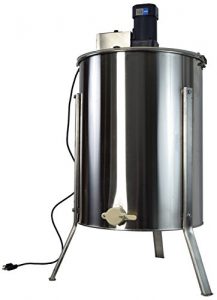
Usually, most beekeepers wait for the end of the nectar flow to go and find out if they can harvest the honey. Conditions will usually vary depending on your location but the best time to start harvesting honey is at the start of summer towards the start of fall. During winter, bees usually don’t go out of the hive because of the extreme weather outside. This means that there is no way for them to get food from outside the hive and they will keep themselves from starving to death by eating the honey they have in the reserves.
The bee colony needs at least one full season for a sizable population to be grown that will be large enough to produce surplus honey for you to harvest. When the frames contain at least 80% of capped and sealed honey, you can go ahead and do the harvesting. A little patience however can even be more rewarding for you in the long run.
Honey may be harvested using a honey extractor.
Can I Keep Bees and Not Harvest Honey?
The motives and inspirations behind starting beekeeping vary from one individual to the next. Some beekeepers start keeping honeybees for their ecological value. You can keep bees without aiming at harvesting beehive products for their economic value or personal use.
If you do not harvest honey from a beehive, the stocks build up over time. Due to the increased availability of food resources, the honeybee colony increases in the number of bees rapidly. Ultimately, swarming occurs. This is one of the targets of beekeepers who only keep bees for their pollination activity.
You can prevent a honeybee colony from swarming by splitting the hive yourself. Beginner beekeepers looking to expand their apiary by increasing the number of honeybee colonies have used this method successfully. They can have many colonies in a short period of time. Splitting a hive is a delicate operation that should only be carried out when you have some beekeeping experience. You may invite a more experienced beekeeper to help you out if you are a beginner beekeeper.
11. What are the Threats to Honeybee Colonies?

Honeybee colonies are prey for some predators, pests, and parasites. Additionally, there are diseases that affect bees. These threats to honeybees cause defects in bees and lead to low yields of beehive products. Beginner beekeepers should be aware of these threats. The major threats in form of pests, parasites, and diseases that are of economic significance are:
Tracheal and Varroa Mites
Varroa and tracheal mites are a major threat to beekeeping. They suck on bees’ blood (hemolymph) and affect bee larvae. The result of mite infection is bees with deformed wings and a reduced lifespan for bees with mites. Mites are controlled using various methods including miticides, essential oils, and mineral oil. Some beekeeping practices also help keep mites in check. Rotation of some mite treatments is necessary so that the mites do not develop resistance to any one treatment method.
Wax Moths
Wax moth larvae are a destructive pest of honeybees. They burrow through brood cells and damage honeycomb in a weak honeybee colony. The larvae prefer a comb that has been used for brooding but also eats wax on honeycomb. Wax moths can be successfully controlled even with heavy infestations.
Hornets, Wasps and Yellow Jackets
Hornets, wasps, and yellow jackets often kill bees while out foraging or at the entrance of the hive. They are best controlled by finding their nest and destroying it. An entrance reducer on your beehives also helps bees guard the hive better.
Small Hive Beetle, Termites, and Spiders
These cause damage to the beehive and your honeybee colony in various ways. The small hive beetle feeds on pollen in the beehive and lays eggs. It can easily overrun a colony of bees if not controlled. Pesticides work well to control small hive beetle infestations. Termites, on the other hand, make burrows in the beehive and lower its structural integrity. Prevent termites from reaching your hive by not having the beehive sitting directly on the ground. As for spiders, they are predatory insects and so may attack bees. Control spiders by removing any webs you find near your beehive.
Robber Bees
Bees from other colonies may attack a hive to steal honey. Robber bees are a big threat to new honeybee colonies and weak colonies. They are attracted by feeders placed outside the beehive. Using an entrance reducer is a great way to prevent robber bees from attacking your honeybee colony.
Predatory Birds
Some birds eat bees in the wild they are foraging. If these birds know the location of your beehive, they make it a habit to catch bees near the beehive and eat them. The only way to control this is by moving the beehive to a new location. Optionally, you may try trapping the birds.
Honey Badgers and other Animals
These include bears and mice. Small animals are easily kept out of the beehive using an entrance reducer and screened entrances. The smell of mice urine, if they make a nest in your beehive, can make bees leave the hive. Larger animals such are bears that love honey may break the hive open to reach the honey. Protect the beehive and your bee colony by having the beehive on a raised bear-proof platform or using an electric fence around it. Once a bear has the location of your beehive, chances are it will not stop coming back for the honey and the only solution is to move the beehive to a new location.
Chalkbrood
Chalkbrood is a disease of bees caused by a fungus. It grows on honeybee larvae and kills them. There is not much you can do to control the disease except requeening the honeybee colony. Strong colonies remove infected larvae from the beehive and may successfully end the infection by themselves.
European Foulbrood
This disease of honeybees is caused by a bacterium. Requeening the colony or caging the queen helps control the disease. Sometimes, it clears by itself when there is a strong nectar flow.
American Foulbrood
American Foulbrood is a very contagious honeybee disease. It is caused by bacteria that form vegetative spores. It can wreak havoc in a beehive. The only solution to controlling American foulbrood in a beehive is burning the affected beehive boxes. Treatment with Terramycin where it is legal to use it prevents infection of your honeybee colony by American Foulbrood bacteria.
Sacbrood
Sacbrood is a viral disease. It affects a small number of brood and weakens the honeybee colony. Requeening the beehive can help.
Nosema
This disease manifests itself as diarrhea of bees due to spore formation in their digestive tract. It shortens bees’ lifespans and can interfere with the laying of eggs by the queen if she gets infected. Healthy honeybee colonies with a young queen bee and ample food resources are less likely to suffer from Nosema.
Paralysis
Paralysis can be acute or chronic. It is often a result of bees consuming pollen from certain plants or pollen that has fermented. It resolves without treatment. Susceptibility to paralysis is genetic and can be avoided in the future by bringing in a new queen bee for the honeybee colony.
Pesticides
Pesticides are also a significant threat to bees. Spraying insecticides may affect bees since they are insects. This is a human hazard to bees and may be difficult to overcome since bees travel long distances to forage. If you are aware your neighbors will be using pesticides, drape wet burlap over the beehive. It discourages bees from going out of the hive.
When working with some treatments for the threats facing your honeybees, be sure to take safety precautions. Wear protective gloves, and goggles and avoid breathing in the treatment compounds. Follow the instructions and take the measures outlined in each treatment you buy and use on honeybees.
12. What are the Best Beekeeping Practices?
There are two very important beekeeping practices that you should be aware of when getting started in beekeeping. These are beehive inspection and feeding your honeybee colony.
Beehive inspection is required in regular intervals to check for your honeybee colony’s health. Identifying problems to the colony early allows you to address the problem before it overwhelms your honeybees. A beehive inspection checklist is useful to make sure you get the most out of every beehive inspection you carry out.
Feeding the colony helps it get strong quickly and survive harsh times such as winter. A honeybee feeder placed inside the beehive is recommended. It reduces the chances of attracting bees from other colonies that may turn out to be robber bees.
13. Which are the Best Books for Getting Started in Beekeeping?
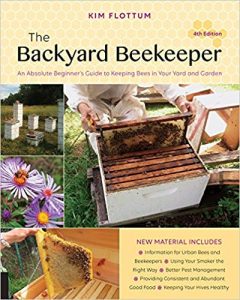
Beekeeping learning materials and resources are offered in the form of books. There are many authors who have published many works with varying depths of information. On average, a beekeeper should have 3-4 books. One should be a basic book that gives a general overview of beekeeping practices. The others should be detailed in the content they offer to the beekeeper. They help you become a professional beekeeper quickly. When making your purchase of beekeeping books, go for recent revisions that cover emergent issues of concern in beekeeping.
Many beekeepers have clubs and associations for their counties or regions. It is advised that both beginner and professional beekeepers join these clubs and become active members. A beekeeping club is a great place to access more beekeeping books. Meeting other beekeepers at the club is a great opportunity to ask around about the best books to buy. You also get the opportunity to exchange books with other beekeepers to expand your knowledge about beekeeping.
Top beekeeping books that are loved by beekeepers and work very well for beginner beekeepers include:
1. First Lessons in Beekeeping
This beekeeping book covers the basics of beekeeping very well. It is written by Keith S. Delaplane who is an entomology professor. The first edition of First Lessons in Beekeeping was published in 2007. It has great information about honeybee biology, diseases, management, beekeeping equipment, and honey processing.
2. The Backyard Beekeeper
The Backyard Beekeeper is written by Kim Flottum. A 4th edition of the book was released in 2018. In the book, Flottum guides beekeepers of all skill levels as well as urban and rural beekeeping. It includes emergent information and recently developed methods of beekeeping. The 4th edition of The Backyard Beekeeper also has nice recipes for creams, butter, and balms that you can make using beehive products.
3. Beekeeping for Dummies
This is the beekeeping book every beginner should have. It gives good information from which you can build your skills and expertise. Beekeeping for Dummies is authored by Howland Blackiston who has been a beekeeper for more than 3 decades. The book has excellent tips and comes in both paperback and e-book formats. Make sure to read through Beekeeping for Dummies before going into more advanced beekeeping books.
4. The Beekeeper’s Problem Solver
The Beekeeper’s Problem Solver is a question-and-answer book. It has 100 questions covering challenges you are likely to encounter in beekeeping and their solutions. The book is very practical and effective in helping beginner beekeepers navigate their way through beekeeping.
5. Practical Beekeeping
In Practical Beekeeping, information is laid out in an easy-to-digest manner for beginner beekeepers. The book breaks beekeeping topics into sections that are interlinked and others stand alone. Practical Beekeeping is authored by Clive de Bruyn. It has a great index section that helps you find anything you are searching for from the book’s contents. Practical Beekeeping is heavy on photographs and illustrations to help you understand the content better.
14. What Beekeeping Courses Should Beginner Beekeepers Take?
Learning how to be a good beekeeper is greatly aided by beekeeping courses. Organizations that focus on beekeeping and beekeeping clubs have short and long courses for beekeepers. You may take the beekeeping course of your choice physically or by correspondence. Beekeeping courses cover basic certification and are segmented into modules. Advanced courses for beekeeping earn you the advanced Theory Certification in beekeeping.
Beekeeping courses include examinations and assessments. They help ensure beekeeping is practiced with good standards. In addition to the information provided on this website, beginner beekeepers should find a reputable institution offering beekeeping courses near them. You can also take the correspondence learning option if you are working so that you can learn at your own pace.
15. Can mMy Children Become Beekeepers?
Beekeeping has no age limit. When you are a beekeeper, you can have your children accompany you to beehives. They learn about beekeeping early on in their lives and become very successful beekeepers. Start the children out with brief beehive inspections and bring them into the more tasking beekeeping activities gradually. Children love and appreciate involvement in beekeeping. You will also benefit much from the extra hands.
When you have children involved in beekeeping, be sure to emphasize to them the need for safety around bees. Teach them about working around bees in advance before you take them on a visit to a real beehive with a honeybee colony in it. You could also start children on honeybee colonies that you know are less aggressive.
There is great beekeeping safety equipment for children available. Shop around for suitable beekeeping suits and other protective wear that fits your child. This includes gloves, hoods and veils, and boots. Make sure to replace the protective beekeeping wear once the child outgrows it.
The Getting Started in Beekeeping Guide
Getting started in beekeeping is the first step towards a very fulfilling beekeeping practice. Beginner beekeepers may find the going tough for their first year or two. They quickly settle into practice and gain valuable skills that make them professional beekeepers quickly. Join a beekeeping club to link up with other beekeepers in your area. You will learn from their experiences and get a support system to help you through your time as a beginner beekeeper. By joining other beekeepers, you will also learn about solutions to beekeeping challenges in your area.
Even though we’ve covered the most frequently asked questions, there’s still a lot you should know before getting started in beekeeping. But fret not, we here at BeeKeepClub have put together the ultimate guide that will see go from an amateur to setting up your hive in no time, and reaping its sweet results. Let’s get started.
Step 1: Starting Out
1. What is beekeeping?
Beekeeping is the human activity of maintaining honey bees. A beekeeper is someone who keeps bees for the purpose of collecting their honey. Learn more.
2. Backyard beekeeping
Backyard beekeeping doesn’t require a lot of space, and if you have plants around, then that’s a suitable environment for the bees to thrive in. Learn more.
3. Urban beekeeping
Urban beekeeping is the practice of keeping bees in an urban area, as opposed to the traditional backyard setting. Learn more.
4. Bee hive kits
The bee hive is a specially constructed structure where bees live. There are several types of bee hives that beekeepers that utilize. Learn more.
5. Where to buy bees
Get started with your beekeeping activities by obtaining your own bees for your hive. Learn where to buy bees and what to look out for. Learn more.
7. The cost of beekeeping
Get a rundown of the tools and supplies needed for beekeeping and their associated costs. Learn more.
6. Beekeeping in winter
Beekeeping in winter gets even more difficult if you’re just starting out. It doesn’t help that you become anxious that your bees won’t survive. Learn more.
7. Bee-friendly plants
A bee-friendly garden is not only important for the beekeeper but it is also essential for farmers and homeowners who have crops. Learn more.
8. Bee pests and parasites
Every living animal in nature has an enemy. The honey bee is no exception. It has its share of pests and parasites that attempt to invade its territory. Learn more.
9. Bee diseases
Bees are well-known for their effective defense against disease. However, despite this self-defense mechanism, bees are still prone to diseases. Learn more.
10. Indoor beekeeping
Indoor beekeeping has gained popularity with the hobbyists and small-scale beekeepers. The advent of the BEEcosystem in particular is a complete game-changer. Learn more.
11. Beekeeping tips
To be more successful in beekeeping, follow these beekeeping tips and nuggets and you will not only get a healthy and productive bee colony but will also get a sense of fulfillment for doing the right thing. Learn more.
Step 2: Getting to Know Your Beekeeping Equipment
1. Choosing your beekeeping supplies
To be a beekeeper you do not need a lot of skills or experience, however, it’s very important to choose the right beekeeping supplies. Learn more.
2. The beekeeping starter kit
For beginners to beekeeping, a beekeeping starter kit provides all the tools and supplies needed to get you up and running. Learn more.
3. The beekeeper suit
A beekeeper suit is comprised of protective garments which are usually worn by people involved in the business/hobby of beekeeping. Learn more.
4. Honey harvesting equipment
The honey extraction process is multi-step, and as such, there is various honey harvesting equipment to be used at each step. Learn more.
5. The honey extractor
A honey extractor is a mechanized device that is used for the extraction of honey from bee combs without damaging them. Learn more.
6. The bee smoker
A bee smoker is a tool used to calm bees during honey harvesting. It is made to produce smoke from the smoldering of various fuels. Learn more.
7. Bee hive feeders
Beehive feeders are necessary when conditions are not favorable for bees to gather their own food, such as during the winter season. Learn more.
8. How to add feeders to your bee hive
Feeders are used for supplying the bees with sugar syrup when sources of nectar are minimal of non-existent. Learn how to add feeders to your bee hive.
Step 3: Buying the Right Beekeeping Equipment
1. Beekeeping equipment reviews
BeeKeepClub will help you with your purchasing decisions. Read our reviews to determine which beekeeping equipment will be right for you.
2. Beekeeping equipment rankings
View rankings and comparisons of the best beekeeping supplies available:
- Beekeeping starter kits
- Beehive boxes
- Sting proof bee suits
- Ventilated beekeeping suits
- Honey extractors
- Bee smokers
- Bee feeders
- Mason bee house
Step 4: Honey Bee Products
This is the whole point of beekeeping – the products that are derived from the activity, which can then be sold at a profit. These include honey (of course), bee wax, propolis, royal jelly, and bee pollen.
1. Health benefits of honey
There are many health benefits of honey. Let’s learn about them.
2. Honey bee products besides the honey
Honey is one of those products that is widely used in many areas, including homes, hospitals, industries, and even restaurants. Learn more.
3. Health benefits and side effects of royal jelly
Royal jelly as a natural product offers a plethora of benefits. It has an acidic feel and leaves a mild tingling sensation when ingested. Learn more.
4. Health benefits and side effects of propolis
Overall, the health benefits of propolis far outweigh its negative effects. It is available in various forms for consumption. Learn more. Learn more.
5. Health Benefits and Side Effects of Bee Pollen
Bee pollen is considered a medicine in most states due to its many benefits. However, it is not without its side effects. Learn more.
The Start of your Journey
Beekeeping is an age-old tradition that has been practiced for thousands of years. People usually decide to keep bees for honey, wax, propolis, and for cross-pollination, whether to pursue a hobby or for business purposes. Beekeeping is usually not very hard as long you have some space in that you can place your hive. As you are just getting started in beekeeping, you need to protect yourself from possible bee stings by purchasing the bee suit and all its accessories such as the hat, veil, gloves, and boots. A beekeeping starter kit would really come in handy too, as it would come with everything needed to get up and running.
BeeKeepClub has a wealth of information to help you in getting started in beekeeping; so take your time, dive in, and have fun!
 BeeKeepClub Resources and Guides for Beekeepers
BeeKeepClub Resources and Guides for Beekeepers

[…] Suppose you have a hobby farm that you’re particularly proud of and you couldn’t imagine doing anything else for a living. Then why not decide to turn your hobby farm into a small business so that you can earn a steady revenue stream from it? Here’s how to go about getting started. […]